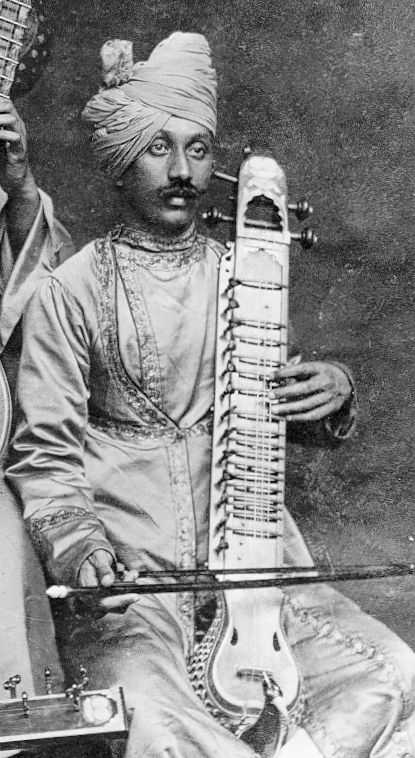
Indian musician playing a Mayuri veena or Taus
These pages will present information on a number of topics related to the instruments of the collection, their music, their relevance in history and their relevance in the concert hall, the conservatory and the music school today. Substantial information on the cultural developments during the Renaissance, the Baroque and the Classical Periods will help place these instruments and their heritage in proper perspective.
|
THE BOW: THE SOUL OF THE INSTRUMENT
|
|
ON THE VIOLA DA GAMBA The Oldest Viola da gamba Which is the oldest viola da gamba known to us? When and where was it invented? Origin of the viola da gamba (English / viola da gamba (Deutsch) What are the differences between the viol family and the violin family Diversity in Form of the Viola da gamba! A study on viola da gamba shapes and construction principles: iconography Formen der Viola da gamba(Deutsch) A study on viola da gamba shapes and construction principles: text The Violetta What exactly is a violetta? The Violone What exactly is a violone? Sonatas for Viola da gamba and Harpsichord by Bach (Seminar) Marin Marais and his Time (Seminar) Concertos for Viola da gamba and orchestra: Telemann and Tartini Concertos for Viola da gamba and orchestra: Johann Gottlieb Graun and Ludwig Christian Hesse Konzerte für Viola da gamba und Orchester: Graun und Hesse (Deutsche Fassung) |
|
ON THE VIOLIN FAMILY The Oldest Violin Which is the oldest violin known to us? When and where was it invented? Origin of the violin (English) / Ursprung der Violine (Deutsch) The Violone What exactly is a violone? What are the differences between the viol family and the violin family A case in point... Who made this violin? (a warning about attributions by experts!) |
|
INSTRUMENTS THAT WILL MAKE YOU VIBRATE (they have sympathetic strings) The Viola d'amore What exactly is a viola d'amore? (not yet available) The Baryton: a magical instrument |
|
|
More to come...
updated